

How to use anchor charts in your classroom
- October 10, 2021
This post may contain affiliate links. You pay the same, but I make a small commission. Please, see my full disclosure for further information.

Using anchor charts in the classroom is something that every teacher should be doing. Anchor charts help students make connections with the content. When teaching in a bilingual or dual language classroom, using anchor charts in Spanish is essential because students need to SEE the words they are saying on paper. Anchor charts also help students learn tier-3 vocabulary words in English and Spanish. This is a crucial step in ensuring students can make linguistic connections. In this post, I will show you how to use anchor charts in your classroom to support second language acquisition.

When I first started teaching in a dual language program, I learned that I needed to use anchor charts to help my students learn English and Spanish. The problem was that no one told me how to do that. Searching the internet proved useless. But through a lot of trial and error, I was finally able to figure out how to do this in my own classroom. Now I want to save you some time and energy by showing you to create and use anchor charts in your classroom.
What are Anchor Charts?
Anchor charts are content-specific posters that you create with your students. The word with here is really important. Premade posters are NOT anchor charts because your students did not participate in the creation process. Now, if you are like me, this may give you some anxiety. I too am awful at creating charts on the spot, so I will share some tips and tricks to make this task a little less daunting. However, using a premade poster that your students have no part in creating is definitely not what we want.
How can anchor charts support language acquisition?
When students are learning a new language, they need to be exposed to new vocabulary constantly in multiple ways. So whenever you are teaching a new skill – for example, how to summarize an informational text – students need to see related words over and over again. We also need to make sure students know what those words mean. We can do that with anchor charts!
Let’s pretend that I am teaching my class how to summarize an informational text in Spanish. Half of my students are Spanish speakers learning English. The other half are English speakers learning Spanish. My job is to bridge that “linguistic gap.” All my students need to understand exactly what we are doing. And I need to stick as much as possible to the language of the day.
For this example, we will pretend the language of the day is Spanish. If I am just introducing summarizing to my students, those who are learning Spanish will have a tough time understanding what we are doing. And we don’t want disengaged learners! Disengagement = behavior! So what do we do? We use the preview-view-review strategy (PVR) and our anchor chart.

What is PVR?
I have a whole blog post about the preview view review teaching strategy . So if you are not sure what that is, you can click here to read all about it. But for now, you just need to know that the preview-view-review model helps to systematically create connections between home language and target language.
The first step in the PVR model is the preview. If my language of the day is Spanish, the preview will be done in English. This is a quick overview of the lesson – less than five minutes! But during these five minutes, I can go over some of the vocabulary we will be using and record those words in my anchor chart.
The “view step” is the actual lesson, which for our example is happening in Spanish. I go back to the anchor chart I already started and use it to connect the words I am saying in Spanish to the preview we did in English. Now, my Spanish and English speakers are on the same page. They have all seen the words in their home and target languages.
The final step is a review. Just like the preview step, this should be quick. Mine always lasts about three minutes. I often ask a student to summarize our learning for the class. Sometimes, I ask students to turn and talk to a partner about what they learned as I walk around and listen. The preview and review are always in the same language. For our example, the preview and review would be in English because the main lesson was in Spanish. I always encourage students to go back to the anchor chart and use the words we learned.

Sounds like a lot of work?
It is actually not! Once you have established a routine and learn to use anchor charts to your advantage, the process becomes very easy. To me, the hardest part was always creating the anchor charts. When given unlimited time to work on them, I can create nice anchor charts, but I just don’t have the time for that. I know many people find anchor charts online and sketch them using a projector, but that also takes a lot of time.
My solution was to create printable anchor charts with “fill in the blank spaces.” Like I said before, posters are NOT anchor charts because students didn’t participate in the creation process. The posters were completely finished before students even saw them. But by leaving “blank spaces” in my charts, students can now help me create them. I use students’ input to fill in the blank spaces, and they have an interactive notebook page that goes with the anchor chart. So as I create a chart for the classroom, my students complete a page in their notebook that matches it. This keeps engagement high and gives students ownership over what we are doing.
How can I do the same in my classroom?
I won’t lie – creating these anchor charts will be a lot of work upfront. But if you know that you will be teaching the same grade level for years to come, it is totally worth the time. If you teach third, fourth, or fifth grade, I have created reading anchor charts and interactive notebook bundles for most standards. You can check them out by clicking here .
My bundles include these anchor charts in two sizes (8.5×11 or 24×32). I have also included instructions on how to print in different sizes if you want. Personally, I like to print the large charts and laminate them. Once they are laminated, I can use an expo marker to fill in the blanks with my students. At the end of the school year, I erase the charts and store them on a hanger in my school closet. I never have to print them again! #magical

I hope you feel more confident about how to use anchor charts in your classroom to support your language learners. I can promise you that you will see so much gain from implementing these strategies. Don’t forget to check back to read all about the preview-review-model and how to implement it in every lesson.
See you next time!

Leave a Reply Cancel reply
You must be logged in to post a comment.

Hi, I'm Rebeca!
I help upper elementary dual language teachers with resources and ideas that promote bilingualism and biliteracy.
Learn more about me and how I can help you here .
Privacy Overview
36 free writing prompts in spanish, free writing prompts in spanish for grades 3-5.

36 FREE writing Prompts in Spanish

Biography Lesson Plan: An Introduction to Biographies
Submitted by: stacey lopez.
In this lesson plan which is adaptable for grades 1-5, students will use BrainPOP and/or BrainPOP Jr. resources to learn about biographies. Students will then select a person whose biography they would like to read (or watch a short video about on BrainPOP). Finally, students will write their own biography on a selected person.
Lesson Plan Common Core State Standards Alignments
Students will:.
- Define and explain what a biography is.
- Read or watch an example of a biography.
- Compose a biography.
- Computer with internet access for BrainPOP
- Interactive whiteboard (or just an LCD projector)
- Chart Paper
- Markers--variety of colors
- Sticky notes and pencils for students
- Biography template (optional)
Preparation:
Lesson procedure:.
- Explain to students that a biography of a famous person includes many facts. Ask them to take notes while they are watching either the BrainPOP Biography movie or the BrainPOP Jr. Biography movie. Explain that they will contribute to a class anchor chart about biographies.
- After the movie has finished, ask each student for a fact to add to the anchor chart. Alternate the colors to make it exciting. Students will be able to identify their contribution to the class anchor chart.
- Ask to students to read or watch a biography for a selected person in order to gather more information. Students could watch any of the BrainPOP topics in the Famous Historical Figures Unit or BrainPOP Jr. Biographies Unit , or read about the person's life in a book or online. Instruct students to take more notes while reading.
- Talk with students about the common features their biographies shared. What makes a good biography? Add to the anchor chart as needed.
- Each student may then write their own biography of another person using some of the facts that the class gathered.

- BrainPOP Jr. (K-3)
- BrainPOP ELL
- BrainPOP Science
- BrainPOP Español
- BrainPOP Français
- Set Up Accounts
- Single Sign-on
- Manage Subscription
- Quick Tours
- About BrainPOP

- Terms of Use
- Privacy Policy
- Trademarks & Copyrights

- Advertising Policies
- Privacy Policy
- VA Services
Monday, March 25, 2019
Purposeful talk anchor charts in english & spanish.
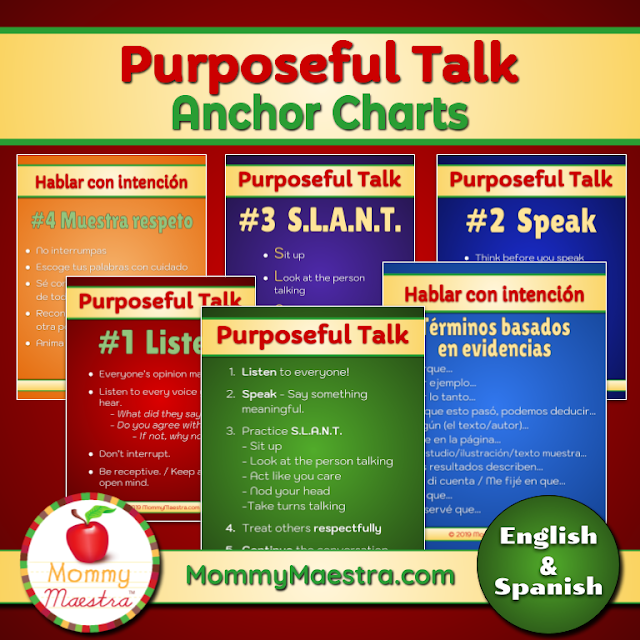

Language & Grammar

Science & Social Studies

Digital Learning
How to use biographies in your reading & writing lessons.

Biography is an important genre in literature, offering readers the unique opportunity to gain insight into someone else’s life and experiences. They are a great way for students to learn about historically important and inspiring people. But it is not only an interesting and important genre to read. It is an important genre to learn about. Introducing the genre of biographies to students can help them become better readers, more critical thinkers, and more reflective writers. So, today I am going to talk about some effective tools for teaching the genre.
Introduce the Genre

First, you will want to introduce the genre to students and explain why it is important. This can be a simple anchor chart where you list the characteristics of the genre. Use the free biography header pieces to create your own!
*Activity Idea For Biography Header- Print two of each letter. Distribute them to your students to color and cut out as early finishers or morning work. The two people who received the same letter can research the person connected to the letter later as a partner project.

Additionally, you can have students read and write about the genre. You can add a printable comprehension passage, fact or research sheet, or a cut-and-paste activity to their morning work or as an independent activity following your mini-lesson!
Provide Examples

Next, you will want students to understand what a biography is by providing examples. When teaching any genre, it is important to introduce the concept in such a way that students understand its significance.
Books and digital biographies can be used for a variety of activities throughout your unit! Make biographies available for students’ independent reading time, add biography-based prompts to students’ morning work or centers, assign biographies as partner reading, etc.
My Recommendations for Biography Book Series: (These are affiliate links to Amazon’s website).
- Who Was? Biography Series
- The Story of Biography Series
- Mini Movers & Shakers
- Ready to Read: You Should Meet
Digital and Online Biographies
- BrainPop, Jr. Biographies
- BrainPop Famous Historical Figures
- PebbleGo Biographies
Taking a Closer Look

Now, it is time for students to read and analyze biographies. This is an important part of teaching the genre.
Teaching students how to read and analyze biographies helps develop their ability to look beyond the surface. During this time, you will want to work on critical thinking skills, close reading, determining importance, and evaluating source reliability.
Skills that can be incorporated with Biographies:
- Main Idea & Important Details
- Inferring & Drawing Conclusions
- Chronological Order
- Cause & Effect
- Problem & Solution
- Text Features + Images in Nonfiction
- Research Writing
Connect Other Content
Integrating biographies with other subjects has many benefits. It helps to draw connections between iconic figures of the past, and how they influenced our current society. Biographies teach us more than just the history of an individual: they bridge gaps in our knowledge and appreciation for subjects like social studies and history by introducing us to very real people who have been able to shape both the world and our understanding of it. This can be done with more subjects than social studies, though. You can study biographies of people who have impacted math, science, art, technology, music, etc.
Nonfiction Narrative & Research Writing

Finally, you can include important writing skills in your instruction. Of course, they can work on narrative nonfiction by writing their own autobiographies. Unlike a personal narrative, students will be focused on all of the impactful events in their life thus far. So, I would start by having students create a timeline of the events in their lives. Then, taking their timeline, they can craft paragraphs for each event, connecting them with transitions and details in the next draft.
Autobiographies are great for peer editing and revision. Students will learn from one another as they exchange and edit each other’s autobiographies. Allow for several drafts and revisions with this!
Not only can students develop their narrative nonfiction writing skills by writing their own autobiographies, but they can also practice and improve their research writing skills. Research writing skills are so essential to a student’s writing development.
Some Tips & Tricks for Research Writing:
- Allow some level of student choice when assigning research writing topics/people
- Link reliable and safe search engines to your online class dashboard
- Provide a graphic organizer or note-taking guide for students so that they can collect and organize their research
- Incorporate multimedia project elements, like PowerPoint, Prezi, Video, Audio, etc. to keep students engaged and offer opportunities to use technology skills
- Provide several exemplars of a variety of presentation types if you are doing an end-of-unit project
Would you like free biography anchor chart pieces?

FREE BIOGRAPHIES HEADER!
Get this activity sent directly to your inbox. Check your email after this!
No-Prep Biography Resources You May Enjoy:

If you’re looking to teach biographies and don’t want the added prep, I have resources for you! Each bundle contains individual biography units. If you’re interested, you will find them in the links under the bundle. Click the links for a closer look!
Want to read more about teaching with biography?
- President’s Day Activities
- Techy Ideas for Biographies
- Women’s History Month Activities
- Read more about: Reading Blog Posts
You might also like...

3 Easy Times to Squeeze Speaking and Listening Skills into Your Day
In today’s blog post we will talk about incorporating speaking and listening skills in your elementary classroom! Finding time to focus on these crucial skills

Introduction to Fractions: Partitioning, Shares, and Fractions in 1st and 2nd Grade
Hello teachers! Welcome to today’s blog post, where we will dive into the fascinating world of fractions, tailored specifically for 1st and 2nd-grade classrooms. Fractions

Teaching Text Features in the Spring
This isn’t the first time we’ve discussed using the current season as a way to make your ELA content more engaging. Adding the element of
Join these happy teachers
Join the email list.
Get teaching tips, how-to guides, and freebies delivered right to your inbox every Wednesday!
Hi, I'm Jessica

I help elementary teachers master the standards by providing helpful standards-based tips, guides, and resources.

Let's Connect
Access your purchases
© Elementary Nest • Website by KristenDoyle.co


Biography Graphic Organizers
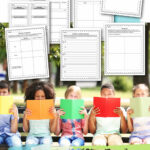
Use this collection of biography graphic organizers to help your fourth and fifth grade students explore biographies during reading workshop.
These biography graphic organizers will be a helpful tool for you as you are planning your biography unit of study.
This is another free resource for teachers and homeschool families from The Curriculum Corner.
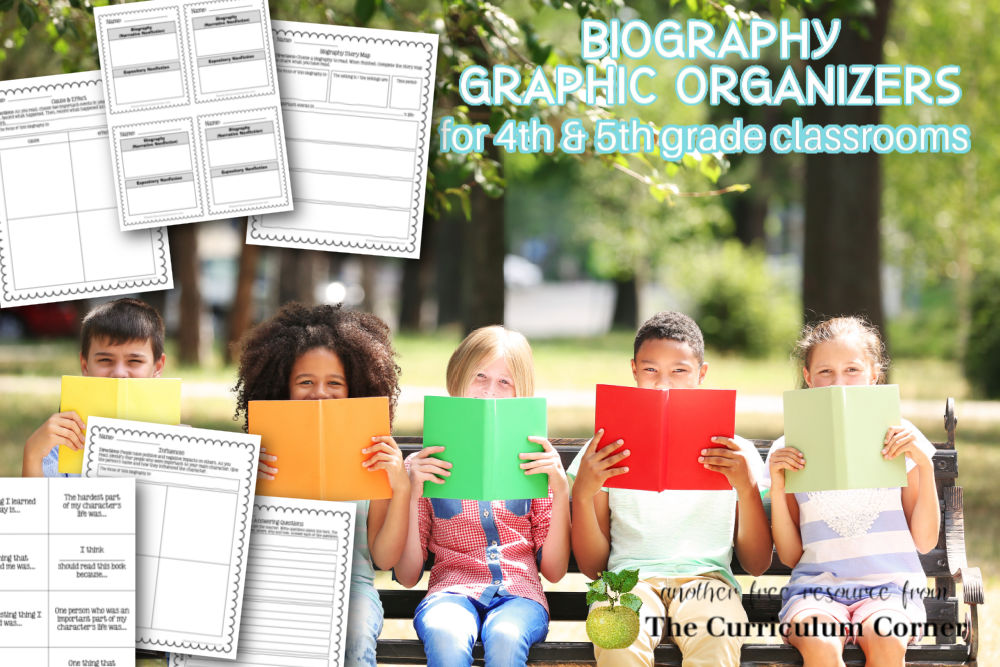
Planning for a study of biographies
As you plan for your unit of study, your first action should be gathering high interest biographies for your students to explore.
These mentor texts should be good, clear examples of biographies. Include your favorites and be sure to include books that will interest your students as well. It’s also a good idea to gather a stack of informational text books that fall under that category of narrative nonfiction. Throughout the unit, you might want to refer to these as nonexamples of biographies.
There are many informational text picture books that are written at a fourth to sixth grade level. This means that you should be able to find some shorter texts that will still challenge your readers. This can be helpful when you want students to explore multiple biographies.
As you work to gather your books, ask students who they would be most interested in learning about. Try to find books that match their requests to keep them engaged in the unit.
If you have a student interested in a subject but are unable to find a book to share, you can turn this into a follow up project. Have the student write their own biography about the subject. You can add this to your classroom librarym .
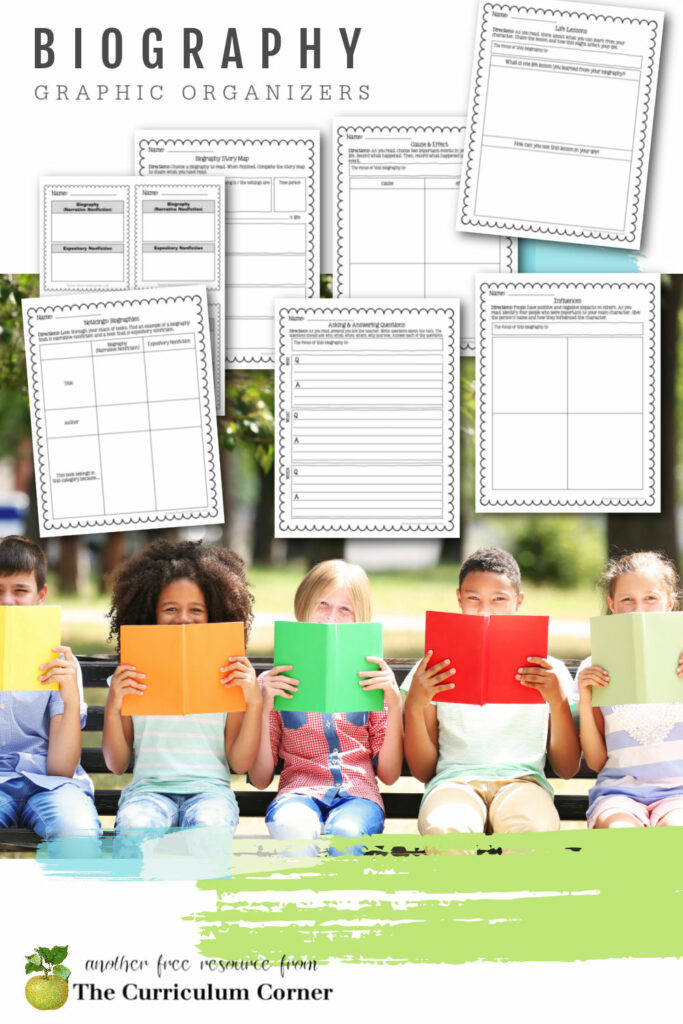
About these biography graphic organizers
This collection contains a variety of biography graphic organizers. You can choose to use the ones that fit your students best.
As always, I encourage you to model these organizers as you introduce them. This will help students to fully understand the expectations.
Lesson 1 Expository or Narrative Nonfiction?
Begin by helping students understand that there is a different between expository nonfiction and narrative nonfiction. Biographies fall under the category of narrative nonfiction and tell a story. Narrative nonfiction may also tell about an event. Expository nonfiction provides an explanation or directions.
This first lesson is designed to help students develop an understanding of the difference between a biography (which is narrative nonfiction) and expository nonfiction.
Share the stack of mentor texts along with the nonexamples of biographies (which should be expository nonfiction.)
Allow students time to look through these books and “notice” differences. Encourage them to make notes on post-its and mark the spots in the text.
These differences will help students begin to develop an understanding of the differences. When students have completed their noticings, pull them together as a class and give them time to share what they found.
Create an anchor chart for students to refer to that is titled “Noticings” and contains the student observations. Observations for biographies might include: tells a story, tells about a person’s life, includes dates, has bold words, has a table of contents, includes a glossary, has an index.
Observations for expository nonfiction might include: gives directions, tells all about an object or animal, explains something, includes dates, has bold words, has a table of contents, includes a glossary, has an index.
Noticings Exit Ticket To check student understanding, have students complete this exit ticket. Students find a biography and an example of expository nonfiction. They then include their choices and reasoning on their exit ticket.
Lesson 2 Biography Story Map
A biography can be similar to a fiction book which tells a story.
It includes a main character, setting, time and often problems.
Have students choose a biography to read and complete this story map.
You might choose to model this lesson by reading aloud a biography one day and completing the story map together.
The next day, students will use their silent reading time to read a different biography they are interested in and then complete the story map.
Lesson 3 Character Traits
Just like when reading fiction, students reading biographies should be trying to determine the character traits of the subject of the biography.
It is important for students to understand that character traits are different from what the person looks like. These resources can be used to help students develop an understanding of the difference: Character Traits .
We suggest using a biography that can be shared during class in order to model the differences for students. Once students have developed an understanding, they can complete their own graphic organizer after reading a just right book during silent reading time.
Lesson 4 Influences
Every person has others who influence his or her life.
These people have positive and negative effects on the character in a book.
For this lesson, focus on how other people in the biography have had an impact on the person.
Students will identify what influence the person had and if the influence was positive, negative or both.
It will be necessary for you to model this with the class in order for students to understand the expectations.
Once a model has been completed with the class, you can have students complete their own graphic organizer during independent reading time.
Lesson 5 Taking Notes While Reading
When reading a biography, it is sometimes important for the reader to take notes so that they remember the important facts.
This organizer can be used for a tool that helps students record the facts in the book.
Lesson 6 Reflections
An important part of reading is thinking about what is being read.
Use these cards to encourage students to think about the person they are reading about.
You can print the page on cardstock and then laminate for durability.
Or, you can print on regular paper and have students choose a question. They can record their response on the back like an exit ticket.
Lesson 7 Asking and Answering Questions
Readers ask and answer questions in their heads as they read to help them create meaning.
This graphic organizer gives students practice with this skill while asking them to record their thoughts.
You may choose to have students answer their own questions or to trade with a peer who is reading the same book.
Lesson 8 Cause & Effect
This is a concept which will take a great deal of modeling.
Students must understand that events in a person’s life lead to outcomes.
As you read a biography, work with the class to find important events in a person’s life and the impact those events had on the person.
As part of this work, help students identify where the answers are.
When students practice this skill independently, you might choose to have them use a post-it note to mark the evidence found in the text.
Lesson 9 Life Lessons
Sometimes reading a biography might teach us lessons we can apply to our own lives.
Encourage students to look at the book they are reading and determine what they can learn from their character.
These lessons might be positive or negative.
You can download this set of biography graphic organizers here:
Reading Download
CCSS Standards Addressed:
Preparing Your Reading Workshop - The Curriculum Corner 123
Thursday 20th of June 2019
[…] Biographies Collection for 4th and 5th Grades […]
Biography Unit of Study for Reading - The Curriculum Corner 123
Monday 27th of May 2019
[…] you need additional resources for enrichment or differentiation you might want to check out the Biographies – Resources from our 456 […]
Monday 14th of April 2014
This is a fabulous post! I hope you don't mind, I'm going to link to this page on Wednesday when I share about biographies on my blog, too! :) :)

- ELEMENTARY TEACHING , INTEGRATED CURRICULUM ACTIVITIES
Teaching Biographies To Elementary Students (Grades 1-5) in 2024
Teaching biographies can feel intimidating at first, but once you have a solid understanding of the genre, a roadmap of how to teach it, and teaching resources and activities, it’s easy! This post will equip you with all of that and more! You’ll feel prepared (and maybe even excited) about teaching biographies (especially if you are using this biography project and these biography activities )!
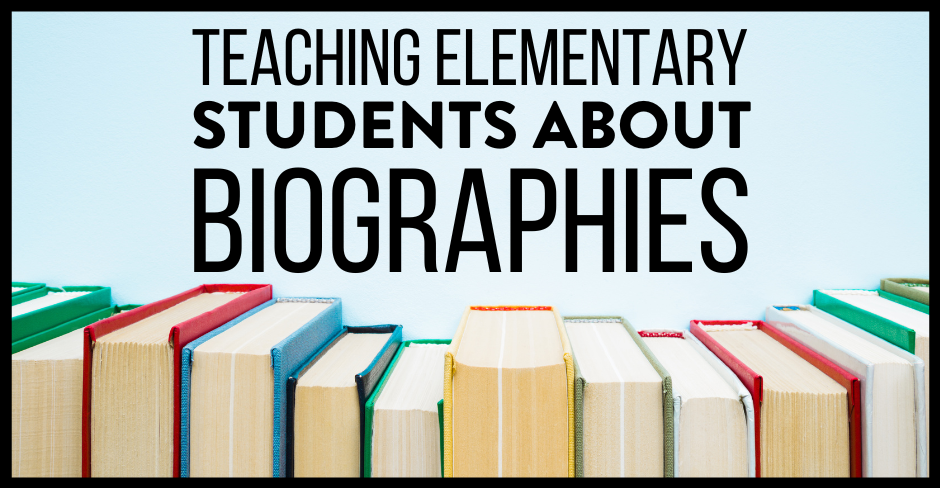
The Benefits Of Students Reading Biographies
There are so many benefits of teaching biographies and autobiographies! Readers are transported into that person’s life. They learn all about the person’s achievements, struggles, culture, life lessons, and personality. Biographies can also teach us about the world through the eyes of the subject while allowing the reader to make connections to them. Most students can find biographies they enjoy when they find people to read about that connect with their likes and dislikes to top it off.
How To Introduce The Biography Genre To Students
The easiest way to introduce and teach biographies is by gathering as many biographies and autobiographies as possible from your classroom library, school, and public library. Make sure that all the books you collect are around your student’s reading levels. This idea works for any theme.
Then, set out the books you collected on each of your students’ tables and have them explore. Ask them to write down what they notice. What do all the books have in common? Have students write down their findings on chart paper.
Next, have each table share with the class what they noticed. They should come up with some ideas like:
- They are all about people.
- The person accomplished something big.
- They all include essential dates or a timeline of the person’s life.
- They included real pictures or illustrations of the person.
- The books all tell factual information, and there are no made-up stories.
Lastly, tell students that books with these characteristics are called biographies or autobiographies. Be sure to tell students the difference between biographies and autobiographies too. Create an anchor chart to hang up for students to reference throughout your biography unit!
4 Ideas For Biography Mini Lessons
After introducing biographies, try one of these mini-lesson ideas for teaching biographies!
- Have students pick a person they are interested in learning more about. Then have them find books about the person and complete a research project about that person to present to the class. You could even take it a few steps further and have students share what they learned in costume as the person they researched in a wax museum activity!
- Have students create a social media page of the person they learned about in their biography
- Have students read about a person of interest, and then write journal entries as that person.
- You could make it seasonal! Around fall, have students paint a pumpkin like a person they read about and present important events or accomplishments as they share their pumpkin. In spring, students could make biography flowers where the center was a photo of the person, and the petals are important events and accomplishments.
Strategies For Using Mentor Texts To Model Reading Biographies
Teaching biographies is simple when you use these strategies!
First, pick any biography or autobiography mentor text and read it aloud. Ok, maybe not ANY. Be sure to choose one that will be engaging to your students. Think about the things they enjoy and go from there. I love picture books because students can generally read them in one session. (Make sure you preview the text first and mark with sticky notes to remember to stop and discuss during the read-aloud!)
Stop at important dates, accomplishments, life lessons, or significant life events to discuss. I even stop to discuss any figurative language or text features included. This will help students with both reading and writing! Students generally have TONS of connections to share during biography read alouds that lead to great conversations.

How To Teach Students To Write Biography Reports
One way to help students learn how to write biographies is to write their first one about themselves! Students can brainstorm what should be included in their biography by creating a timeline that includes important events in their life. Then, they use the timeline to help them write their biography in chronological order. You can model this with a biography about yourself on an anchor chart for students to use if they need help. This is also an excellent way to get to know each other at the beginning of the year!
When it comes to writing biographies about other people, students need to have read several biographies to get an idea of how authors organize this type of writing. When you read aloud, be sure to point out that authors of biographies generally write the story of the person’s life from beginning to end. So students will need to be familiar with sequential order/chronological order text organization. Have students fill in a timeline when you model during read alouds. Point out that biographies usually focus on a part of the person’s life that taught them a life lesson. This biography project and biography activities are great resources for teaching biographies.
Resources for Teaching Biographies
Here are some resources for teaching biography:
1. Biography Project for Elementary Students
Are you looking to begin using a biography project ? Perhaps you are just looking for something better than you already use. If so, this is the resource you need! It is a great resource for teaching elementary students about biographies.
This is a great project to complement a genre study of biographies, an author study, social studies concepts and more. I’ve recently updated the entire product so that it now includes an option to do the Living Biography Museum where families come into school and the students “perform” in character OR can instead be used simply as an independent research project in class or as a homework assignment.
The twist is that instead of having the students dress in costume (which can be a hassle for the parents since most kids can’t put their own costume together) they make a poster board costume with a space for their head to pop through.
A-DOR-ABLE!!!
In the past I’ve done the living museum and had students prepare a brief speech to recite in character. This year I opted to send it home as a homework project and will instead take their photos with their poster board and display them with the written report.
This download now includes BOTH the original version and my new and improved updated version as well. If you have high achieving students who need enrichment this is a perfect activity for them to do on their own or you can use it with an entire class. It’s ideal for grades 2-5.
This biography project contains everything you need to have your students complete a project of their very own to present in class or at a Living Biography Museum.
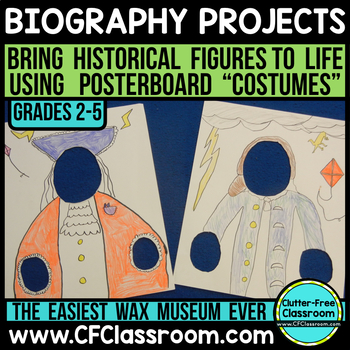
What is included in this biography project?
Make teaching biographies fun by incorporating this biography project , which includes the following:
- Grading rubrics / criteria checklist
- Graphic organizer to plan writing
- Graphic organizer to record sources
- Student writing pages
- Poster board visual directions
5 Reasons Why Teachers Love It
Below are 5 reasons why teachers love using this resource for teaching biographies.
- This comprehensive biography project includes differentiated materials, so all you will be able to meet all of your students’ needs and your they will feel successful.
- The project makes a challenging concept accessible for elementary students.
- This resource facilitates a fun hands-on learning experience that offers opportunities for students to practice important skills without them even realizing it.
- This print and go resource will save you lots of time planning and prepping.
- It is aligned to the Common Core Standards, so it will give you peace of mind knowing your students are practicing important grade level skills.
How to Implement the Project in Your Classroom
You can either do a Living Biography Museum where families come in to school and the students perform in character or it can instead be used simply as an independent research project in class or as a homework assignment.
How I Used the Resources in My Classroom to Teach Biography
We had so much fun making these bio poster boards.
As a bonus, the kids learned a ton.
I started by having them complete oodles of activities from my biography activities packet which acquainted them with a whole bunch of famous folks.
Then I had them work in teams to research Benjamin Franklin. They had discussions about why he was famous. They talked about his accomplishments. Finally, they each wrote about him in the 1st person and performed a monologue as if they were Ben.
To make it oh-so-much-more-fun, I gave them each a poster board to use as a “costume.”
I’m now having them each select their own historical figure of choice to repeat the process as an independent project at home.
I seriously loved this project. The kids did too.
They enjoyed walking around wearing their poster boards and singing, “Who flew a kite in a storm and made history… Ben Franklin Square Pants.”
They also enjoyed having “conversations” with each other while wearing the poster board.
Kid 1: Hey Ben
Kid 2: Yo Ben
Me: **Listening carefully how this conversation is going to go.**
Kid 1: Ben, I really liked how you proved lightning was electricity.
Kid 2: Thanks Ben. You know you’re awesome, right? I mean, you signed the Declaration of Independence and all.
Kid 1: I know dude, right? I totally rock!
And then there was the boy who did a stellar job with his presentation… and then ended it by yelling, “Thank you Philadelphia. Ben Franklin has left the building.”
Third graders make me laugh.
2. Biography Activities for Elementary Students
These biography activities are great resources for teaching biographies to elementary students. It provides teachers with no prep printable biography activities that can be used over and over when studying any person.
This unit was designed to enhance the study of individuals. The activities can be used as part of a genre study or within the content areas. I have also used them with author studies and have had the children complete them as autobiographies about themselves.
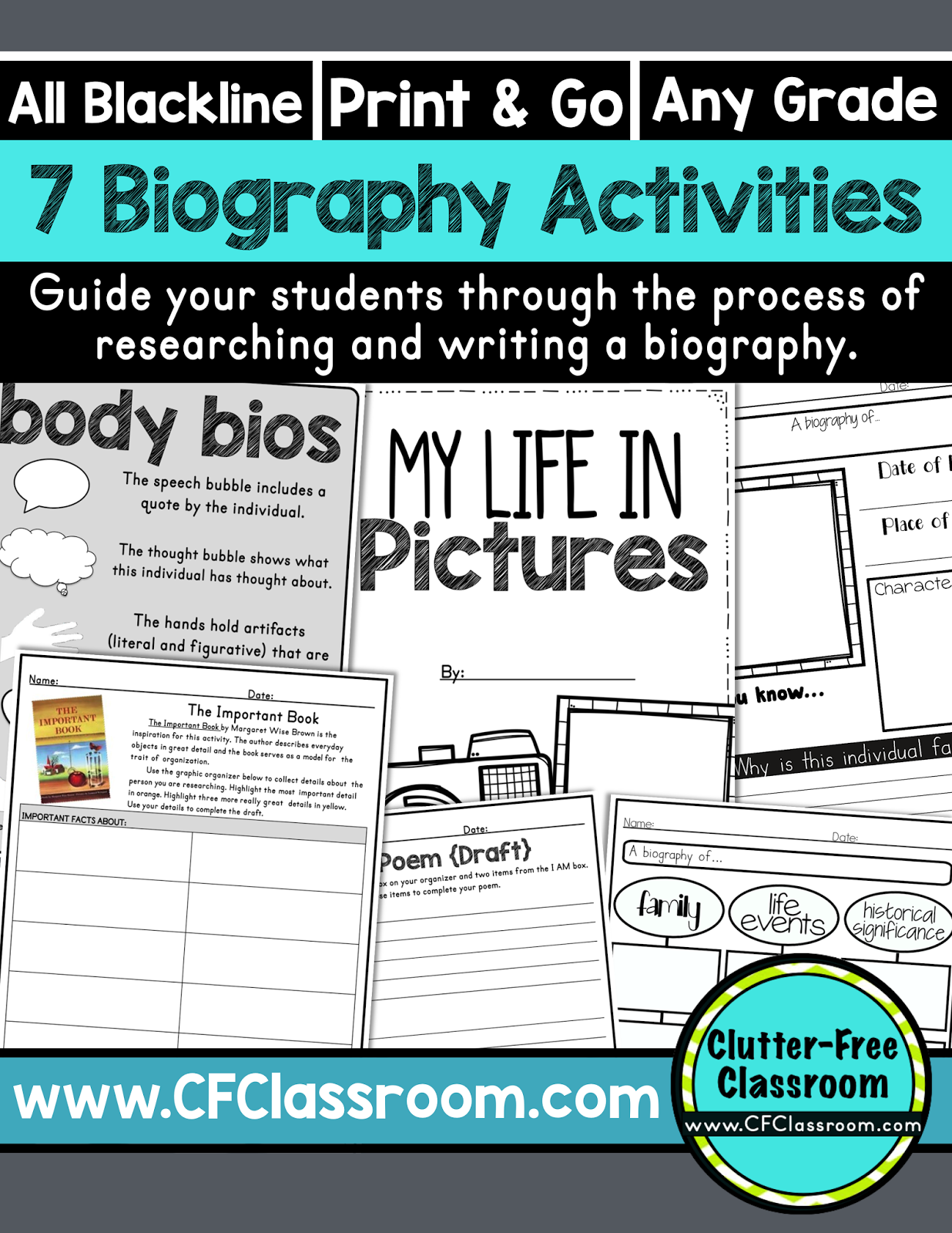
What is included in this resource?
This biography activities resource includes 7 activities. Learn about them below!
1. Biography Poster
Students gather information about any individual and use their research to create an 8.5 x 11 inch poster. The poster has spaces to record the person’s name, date of birth, place of birth, interesting facts, reasons of importance and character traits. They then draw a portrait of their individual.
2. My Life in Pictures: A Scrapbook Biography Project
To complete this biography, activity the student will take on the role of the individual they are studying. The student can either draw illustrations or print and attach photos highlighting important parts of the individual’s life. The student then writes captions. This biography report is so much more fun than writing an essay and more pages can be added as enrichment.
3. Top-Down Topic Web
This graphic organizer shows the relationships to the main idea and details. They represent main ideas in a hierarchy. These research-based tools help the students to comprehend what they have read because it organizes ideas in a systematic, visual graph.
4. The Important Book Biography Activity
The Important Book is a great book for teaching students about writing patterns. This activity was modeled after the format of that book and was designed to encourage students to identify key, important facts about the person they are studying. It makes a great bulletin board display.
5. Body Biography
A Body Biography project is a combination of artwork and writing. The packet includes a poster to use as directions or to display with the students’ completed biography projects. They complete sections such as a speech bubble with a quote by the individual, a thought bubble to show what they have thought about, shoes labeled with places the person has been, a heart filled with character traits. They then draw objects in the hands that relate to the person and create a background that tells the viewer more about the historical figure.
6. Timeline Biography Report
Unlike a lengthy written report, this is a creative way to showcase important events in the person’s life. Students identify key moments and tell about them in words and pictures. They are added to a foldable accordion booklet in sequential order.
7. I AM Poem
An I AM Poem is typically completed as an autobiography. I also have my students do one about themselves to learn more about them. The format is also great for showing what they know about a person they have learned about. The students take on the role of that person to write the poem in the first person.
- These biographies activities are high-interest for students, so they’ll be motivated to learn through reading and researching.
- This comprehensive resource includes differentiated materials, so all you will be able to meet all of your students’ needs and your students will feel successful.
- Your principal, colleagues and school librarian will be impressed by the creative methods of sharing learned information and the integrated learning that takes place.
- The resources can be used with an biography study and be used over and over again.
How to Implement it in Your Classroom
It’s part of our social studies curriculum and technically it is a study of Massachusetts Biographies, but we began learning about the genre with a mini-study of Martin Luther King Jr.
I read several picture books and the students buddy read a free printable reader from A to Z.
We created a top-down web listing information that we learned about MLK.
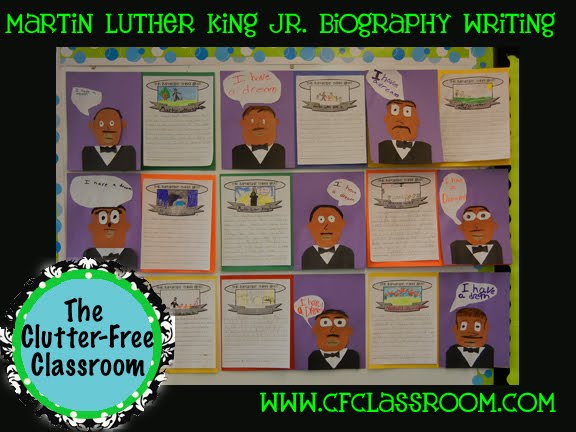
Then I read The Important Book by Margaret Wise Brown, and the students completed an activity I created for my biography packet that was inspired by the book. They used the same format as Brown’s book to compose their own version, “The important thing about Martin Luther King Jr. is…”
Finally, each of my friends made a portrait of MLK using the directions from TLC. They came out crazy cute. I hung each of them up even though I’ll probably take them down and send them home soon. They were just too adorable not to display.
Today, we did another activity (The I Am Poem) from the biography activities packet and a craftivity to go with it. I really feel like I am able to get to know my students on a completely different level through projects like these. They really open up and share such sweet ideas and insight into who they are.
3. Biography Picture Books
Belo are 4 high-quality biography children’s books for elementary students.
1. Martin’s Big Words by Doreen Rappaport
Martin’s Big Words by Doreen Rappaport is a nonfiction picture book that teaches children about the life and dream of Dr. Martin Luther King Jr. Students will learn what life was like for Martin growing up and how he became a leader in the fight for equal rights.
Throughout the book, the author includes actual quotes from Martin Luther King Jr. This book explains how Martin Luther King Jr. encouraged people to use their words to make change and the impact he had on the country. This story follows Martin all the way from childhood through the end of his life.
I liked this book so much I added it to my Starts With a Story collection! Grab these Martin’s Big Words activities to deliver a highly engaging and purposeful interactive read aloud!
2. The Story of Ruby Bridges by Robert Coles
The Story of Ruby Bridges details the struggles that six-year old Ruby Bridges endured when she was chosen to attend an all-white, segregated school as a black girl.
All of the other students’ parents pulled their children out of school because of her, and so she was forced to attend class all alone. She was escorted by U.S. Marshalls every morning, as she had to listen to jeers and insults being thrown at her while she was entering the school.
Despite these hardships, Ruby’s courage through non-violent actions did so much for the civil rights movement, and later that year, two white boys started to attend school with her. This inspirational true story teaches children that, no matter what age you are, anyone can be a trailblazer for change.
I liked this book so much I will be adding it to my Starts With a Story collection! Grab these The Story of Ruby Bridges activities to deliver a highly engaging and purposeful interactive read aloud!
3. The Girl Who Thought in Pictures: The Story of Temple Grandin by Julia Finley Mosca
The story The Girl Who Thought in Pictures follows the life of Temple Grandin. The story starts off with Temple being born, and the doctors thinking that she needed to be sent away because she was different. Temple liked to watch things spin, did not like loud noises or crowds, anything that was itchy, or big squeezy hugs. She also did not talk until she was three. Temple got diagnosed with Autism. Her mom said that Temple was “different, not less.”
When Temple goes to school, the children there would tease her relentlessly. One day, Temple’s mom thinks that it would be better for Temple to stay on her aunt’s ranch. There, Temple finally feels comfortable and explores ways to help animals. Temple goes to college and gets three degrees! Now she travels the world giving speeches and spreading hope. She spreads the message that the world needs brains of all kinds.
I liked this book so much I added it to my Starts With a Story collection! Grab these The Girl Who Thought in Pictures activities to deliver a highly engaging and purposeful interactive read aloud!
4. Planting Stories: The Life of Librarian and Storyteller Pura Belpre by Anika Denise
The sixth picture book on the list of books that are great for teaching biographies is Planting Stories . It is a biographical picture book about Pura Belpre, who was the first Puerto Rican Librarian in New York City. When she started working the library, she realized that there weren’t any of the stories and folktales that she was familiar with in Puerto Rico. She decides to share her stories during story hour and through puppet shows, and eventually publishes a book.
Pura travels across the country and from classroom to classroom planting her story seeds and educating about her homeland. When she returns to the library, she sees that her story seeds have bloomed and everyone is telling her stories. Students will love learning about Pura and how she shared her stories with children everywhere.
I liked this book so much I added it to my Starts With a Story collection! Grab these Planting Stories activities to deliver a highly engaging and purposeful interactive read aloud!
You might also like...

Project Based Learning Activities for Elementary Students
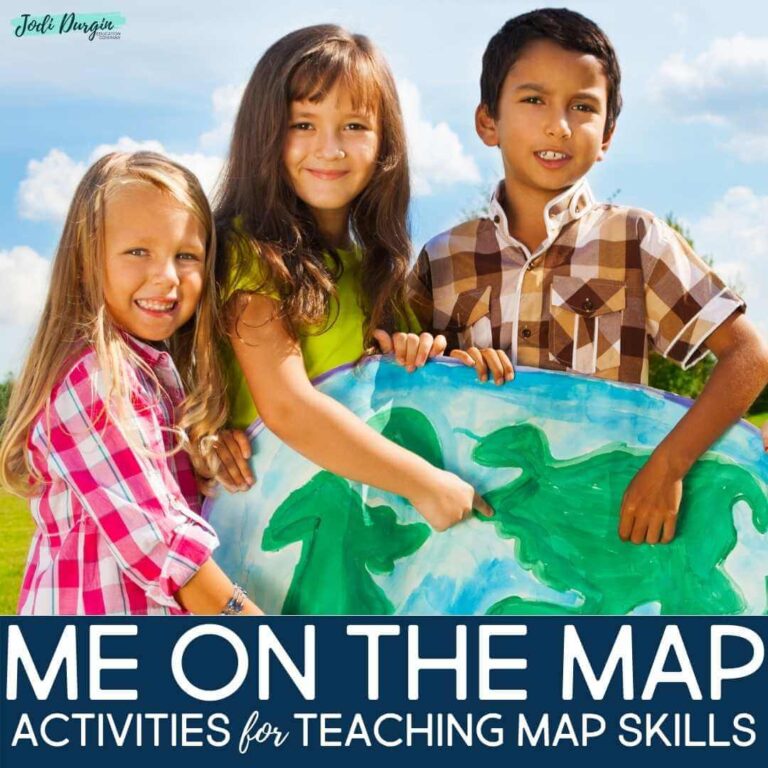
Me on the Map Activities and Printables for Elementary Teachers – 2024

Student-Made Board Games Ideas for Elementary Teachers in 2024
Join the newsletter.

- CLUTTER-FREE TEACHER CLUB
- FACEBOOK GROUPS
- EMAIL COMMUNITY
- OUR TEACHER STORE
- ALL-ACCESS MEMBERSHIPS
- OUR TPT SHOP
- JODI & COMPANY
- TERMS OF USE
- Privacy Policy
- Grades 6-12
- School Leaders
Free printable Mother's Day questionnaire 💐!
Anchor Charts 101: Why and How To Use Them
Everything you need to know about this super useful strategy.
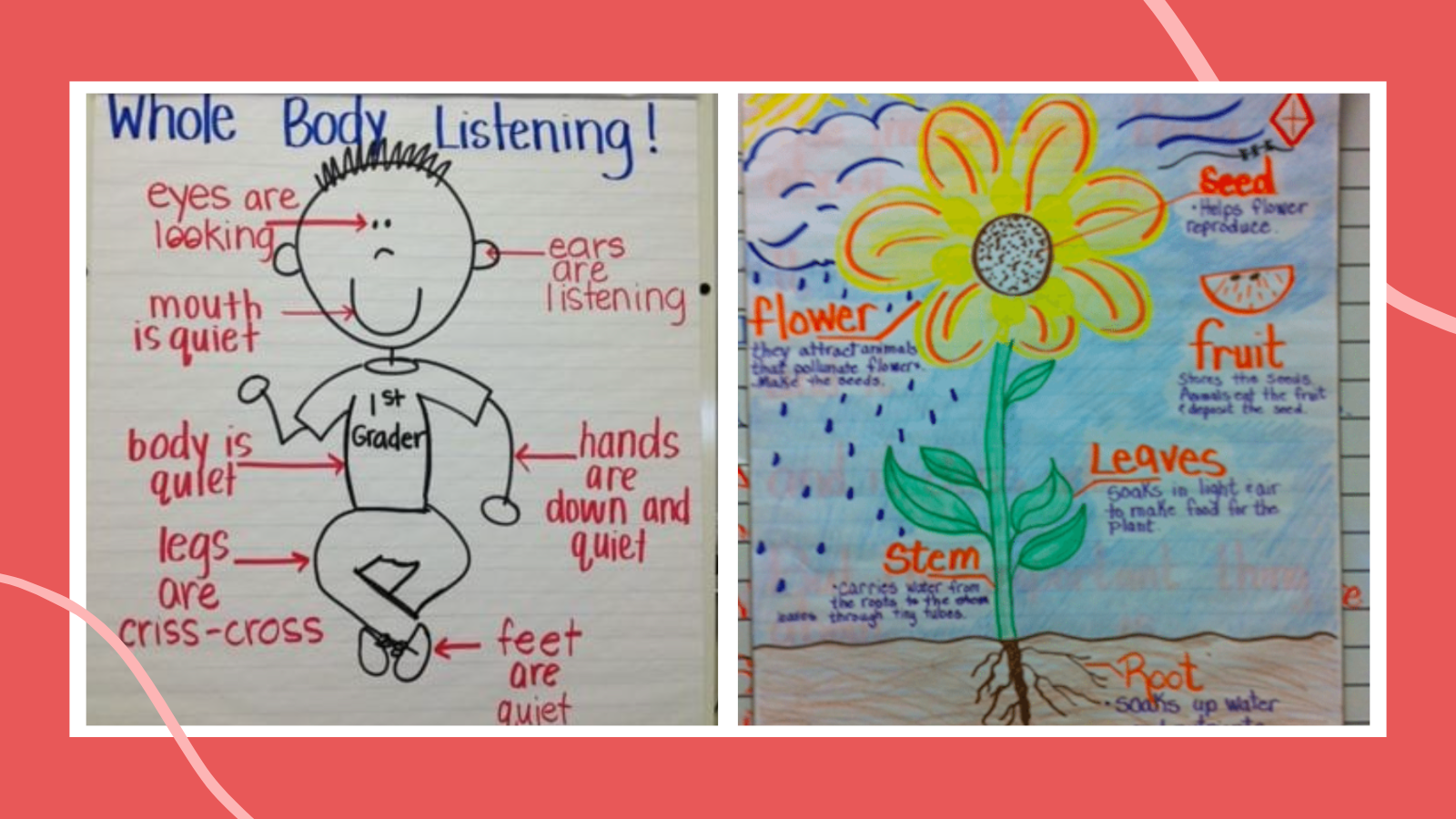
One of the best, most effective tools for the classroom is anchor charts, although you won’t find Anchor Charts 101 on most teacher training programs’ syllabi. If you’re new to teaching, you may have lots of questions about what anchor charts are, what purpose they serve, how to get started, and when to use them. So we’ve created this primer to help you out! Also included is a huge list of anchor chart roundups to use as a resource. Once you get started, we’re pretty sure anchor charts are going to be one of your favorite go-to strategies.
What is an anchor chart?
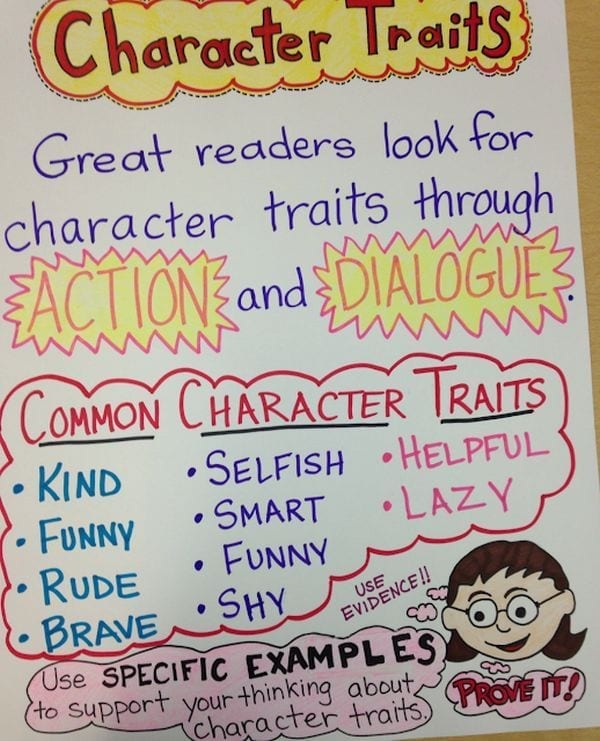
Michelle Krzmarzick/Character Traits via krzmarzickm.blogspot.com
An anchor chart is a tool used to support instruction (i.e., “anchor” the learning for students). As you teach a lesson, you create a chart, together with your students, that captures the most important content and relevant strategies. Anchor charts build a culture of literacy in the classroom by making thinking—both the teacher’s and students’—visible.
How do I create anchor charts?
You really don’t need any special materials or artistic skills—just chart paper and a colorful assortment of markers.
It’s easy to incorporate anchor charts into your lesson plans. All it takes is a clear purpose and some pre-planning.
Typically, you will prepare the framework of your chart ahead of time, giving it a title, including the learning objective, and creating headers for the main points or strategies you want to highlight. It’s very important not to create the entire poster ahead of time. They are best used as an interactive tool with students.
As you model a lesson or learning strategy and interact with your students through discussion, you fill in the blank spaces of the anchor chart. For an awesome tutorial, check out this blog and template from third grade teacher Michael Friermood.
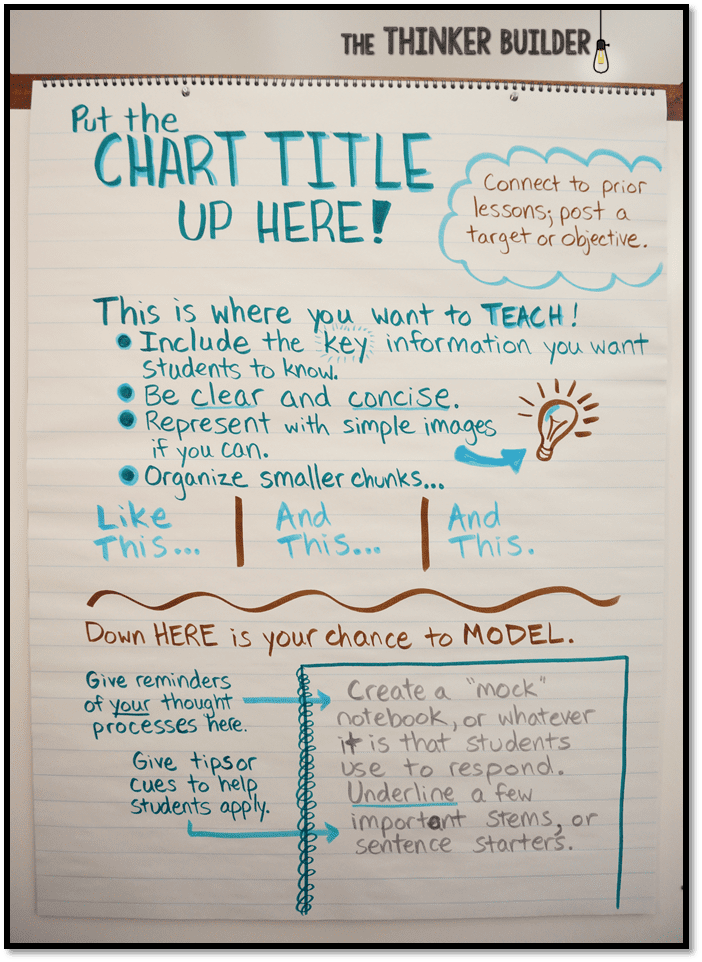
The Thinker Builder/Anchor Chart via thethinkerbuilder.com
After your chart is created, it can be displayed as needed—for a short unit, as a one-time reference tool, as something you continue to add to, or as something that stays up all year—like your classroom procedures or behavior expectations.
Posting the charts keeps relevant and current learning accessible to students, reminds them of prior learning, and enables them to make connections as new learning happens. Students can refer to them and use them as they think about the topic, question ideas, expand ideas, and/or contribute to discussions in class.
A few helpful tips:
Make them colorful and print-rich..
Use different colors and bullet points to help students discriminate between strategies and quickly access information.
Keep them simple and neat.
Use easy-to-read graphics and clear organization. Don’t allow distracting, irrelevant details or stray marks, such as arrows or overemphatic use of underlining.
Draw simple pictures to complement the words.
The more ways students can access information about a subject, the better.
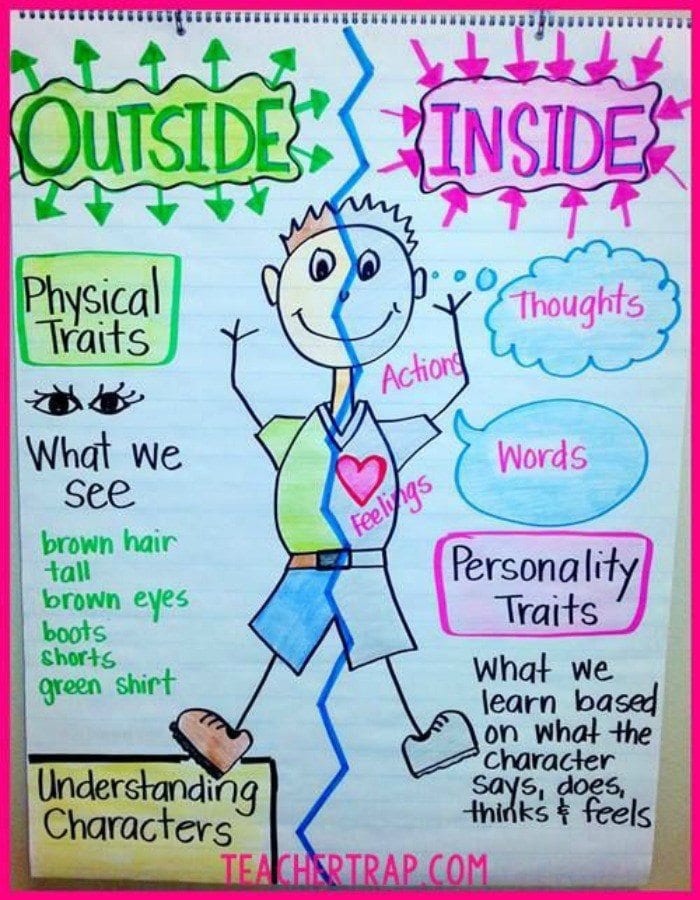
Teacher Trap/3 Secrets for Teaching Character Traits via teachertrap.com
Don’t over use them.
While anchor charts are a super-useful tool, don’t feel as if you need to create one for every single lesson. Choose carefully so the ones you create have the greatest impact.
Don’t be afraid to borrow from others.
Teachers always get their best ideas from other teachers. If your teammate has already tackled a topic, use the same format. Just make sure you create your own version from scratch so your students experience the learning as you go. You’ll find tons of examples at the links included below.
How do I use anchor charts in my classroom?
Now that you know the how , you may be wondering about the when and why . Here are a few ways to get the most bang for your buck.
Reach maximum engagement.
When students are involved in the process of creating learning tools, they are more likely to comprehend more deeply and remember more of what they learn. Anchor charts trigger connections with the initial lesson.
Bring lessons to life.
If you are studying a topic that lends itself particularly well to a visual aid, create an anchor chart! If you are studying plants, draw a giant flower and label all of the parts of it while you teach about it.
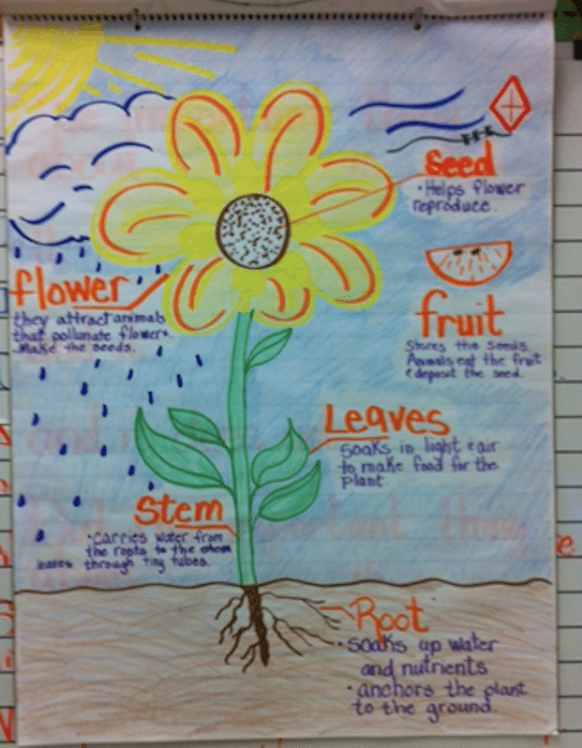
2nd Grade Ponderings/Anchor Chart Linky Party via 2ndgradeponderings.blogspot.com
Support independent work.
Anchor charts provide students with a source to reference when working on their own. They support students and also save teachers from having to spend classroom time going over concepts multiple times.
Create a library of reference materials.
To help students keep information straight, you could create charts for each topic. For example, if you’re teaching math concepts, you could create a chart for geometric shapes, the difference between perimeter and area, and how to multiply and divide fractions.
Reinforce classroom procedures.
Provide students with a visual to remind them of routines that make your classroom run smoothly. Some examples: how to use centers, how to line up, how to check books out of your classroom library.
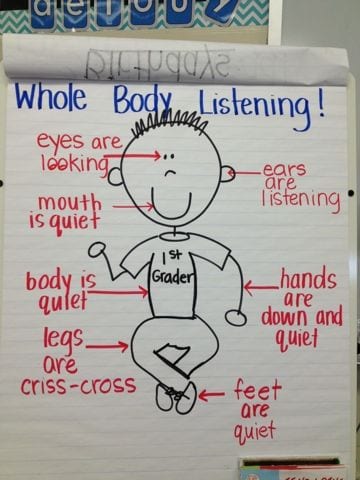
The Primary Buzz/Learning to listen via theprimarybuzz.blogspot.com
Try them in shared writing.
Model how to write an introduction, the parts of a letter, and the proper use of grammar such as quotation marks, commas, etc.
Use them as a companion to read-alouds.
Create an anchor chart as you stop to make observations, ask questions, take note of story elements, or make predictions.
How can I use anchor charts to introduce new skills?
Anchor charts are great for laying the foundation for a new unit of study and giving an overview of concepts. They make it easy to break complex concepts down into bite-size pieces. If you are teaching U.S. government, for example, create a diagram of the three branches of government along with the primary responsibilities of each, to help simplify the concept for students.
The charts are also great for helping students keep track of vocabulary. For each chart, include a box with vocabulary words as an easy reference for students.
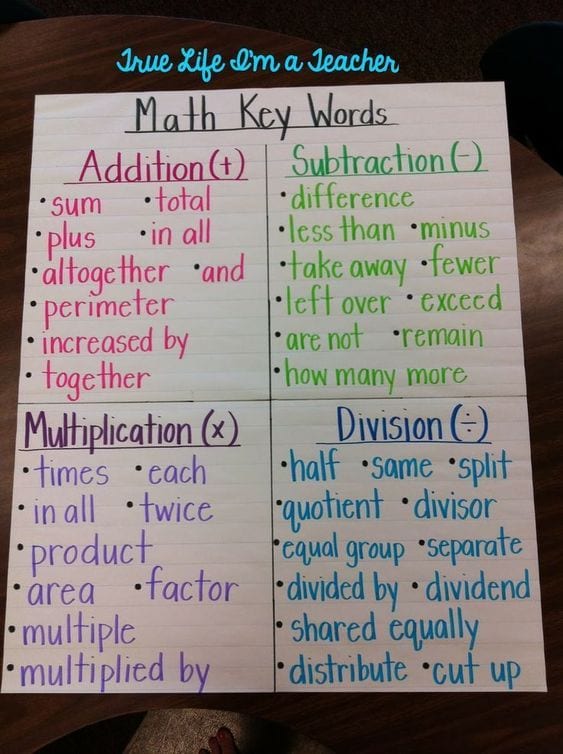
True Life I’m a Teacher/Anchor Charts via truelifeimateacher.com
Helpful Links and Resources
Now that you’ve got the basics of Anchor Chart 101, it’s time to get inspired! Here are links to the best chart compilation articles on WeAreTeachers:
- 20 Anchor Charts To Help Boost Kids’ Tech Skills, Virtually or in the Classroom
15 Anchor Charts To Teach Main Idea
- 12 Character Traits Anchor Charts for Elementary and Middle School ELA Classes
- 18 Fraction Anchor Charts for Your Classroom
- 15 Anchor Charts for Teaching Theme
- 49 Anchor Charts That Nail Reading Comprehension
- 15 Fantastic Sustainability and Recycling Anchor Charts
- 17 Anchor Charts To Teach Place Value
- 19 Classroom Management Anchor Charts
- 40 Must-Have Anchor Charts for Teaching Writing of All Kinds
- 17 Fabulous Fluency Anchor Charts
- 23 Close Reading Anchor Charts That Will Help Your Students Dig Deep
- 12 Anchor Charts To Help Teach Financial Literacy to Your Students
- Get Your Facts Straight With These 18 Nonfiction Anchor Charts
- 20 Perfect Anchor Charts To Teach Phonics and Blends
In addition, there are over 1,000 examples of anchor charts on our WeAreTeachers Pinterest boards . Search by subject matter on topics from math and science to reading and writing to classroom management or by grade level.
Do you 😍 anchor charts as much as we do? Come and share your best tips in our WeAreTeachers HELPLINE group on Facebook.
Plus, check out 10 awesome ideas for anchor chart organization and storage ..
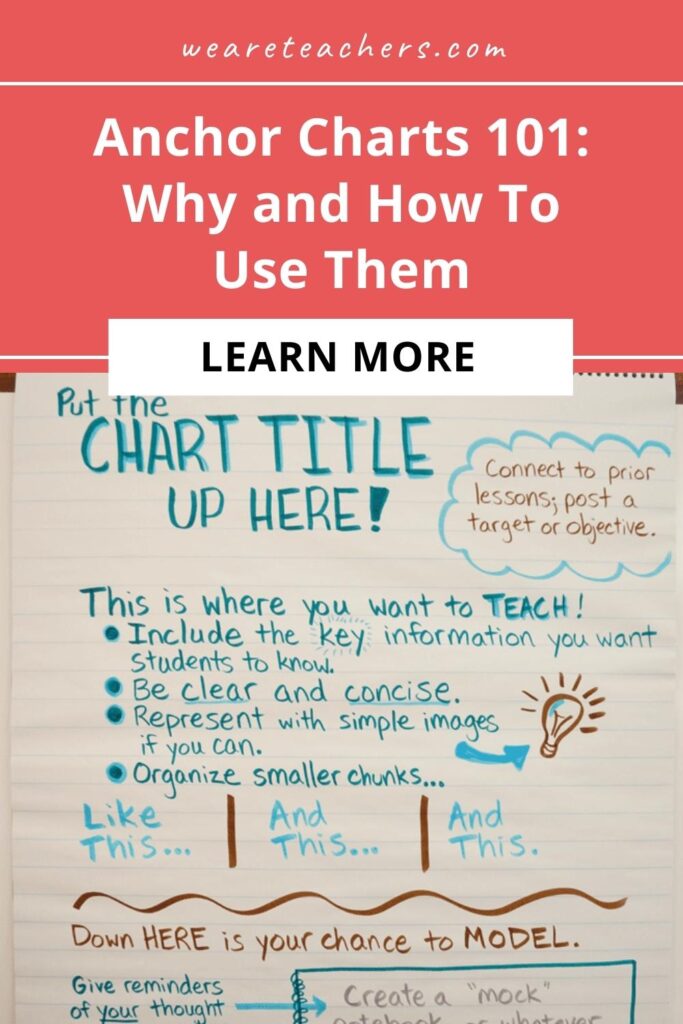
You Might Also Like
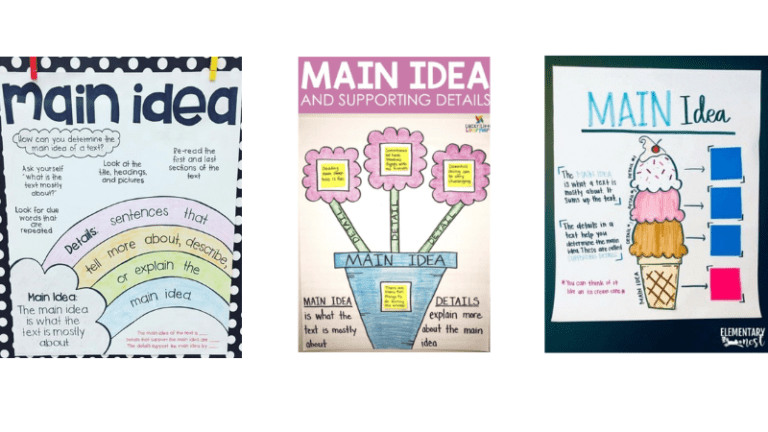
Because teaching main idea isn't as simple as it seems. Continue Reading
Copyright © 2024. All rights reserved. 5335 Gate Parkway, Jacksonville, FL 32256
M&M Bilingual
Wednesday, june 30, 2021, teaching prefixes and suffixes in spanish.
Hello friends! One of my favorite things to teach is vocabulary in SPANISH. Prefixes and suffixes in SPANISH are a great way to increase our students' vocabulary. I'll be sharing a few helpful resources and ideas so keep on reading. Feel free to leave a comment below with your favorite vocabulary building strategy. Don't forget to sign up to receive my email newsletter and download this FREE Prefixes unit just for joining!
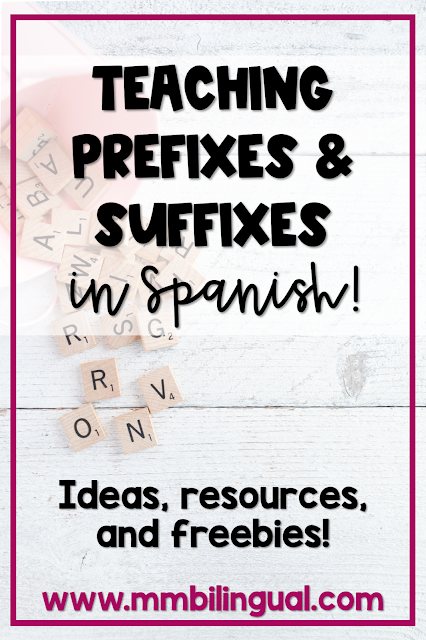
Why teach prefixes and suffixes? ¿Por qué enseñar los prefijos y sufijos?
Research shows that one of our EL's biggest challenge in reading is due to the lack of sufficient vocabulary. Think about when our students are reading and they come across a difficult word. Some students may just skip right over it, and then the context and comprehension becomes even more of a challenge. Other students may try to break down the word and infer it's meaning. By teaching our students about word parts such as prefixes and suffixes, we are equipping them with strategies to decipher the meanings of new words.
3 steps to teach Prefixes and Suffixes in SPANISH!
Step 1: Create an anchor chart with your students.
It is important to teach the most common and grade level appropriate prefixes and suffixes. First, create an anchor chart or word family chart for each prefix and suffix. You can create anchor charts using these Post-it Super Sticky Easel pads . They will be posted all year round as a reference for your students. On the anchor chart, make sure to include:
- prefix or suffix
- plenty of examples
Step 2: Review in small groups
After a whole group lesson, it's time to review prefixes and suffixes in small groups. Students can come to your teacher table and practice hands on activities like the ones mentioned in this blog post . You can use expo markers , sentence strips , highlighting strips , post its , pretty much anything that will get the students excited about deconstructing and reconstructing words.
What does deconstructing and reconstructing words mean?
When deconstructing words use these question prompts:
- What parts do you see in the word?
- What does that part mean?
- Can you find it on the anchor chart?
- Now put this part together with the rest of the word. What does the entire word mean?
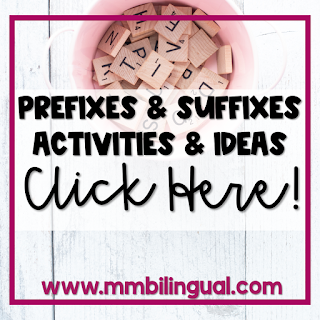
When you are working in small groups, have students work on their own or in centers. Some of these centers can include the prefixes and suffixes worksheets I have in this bundle . This bundle includes: anchor charts, interactive notebook pages, fluency sheets, coloring the prefix/suffix word part, matching games and an assessment. TRY A FULL UNIT FOR FREE - JUST CLICK HERE!
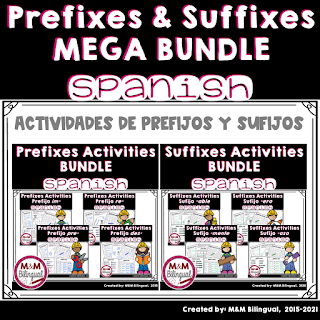
Another activity you can have students work on is this digital and printable Find the Prefixes and Suffixes activity.

Finally, in a reading center have students create these handy prefixes and suffixes bookmarks . Super useful for students to keep track of words that have prefixes and suffixes.
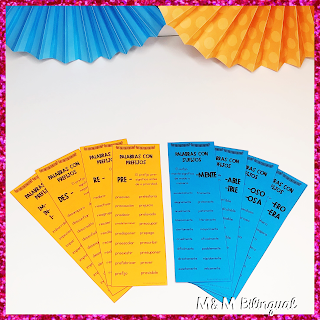
BONUS TIP! When you are doing a read aloud, point out how the author is using prefixes and suffixes and add them to an anchor chart. (This helps students make relevant connections and know that prefixes and suffixes are used everywhere and not just doing vocabulary time)!
Thanks for reading to the end friends! If you'd like a free unit on the SPANISH prefix multi-, JUST CLICK HERE. Until next time friends. ¡Hasta luego!
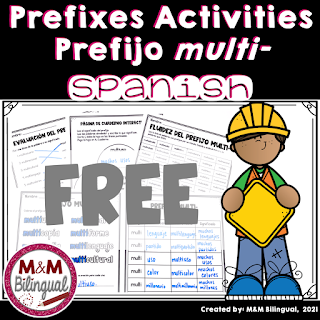
* Please note: this blog includes affiliate links and I do earn a small commission at no extra cost to you. Thank you for your continued support!
No comments:
Post a comment.
Biography Anchor Chart
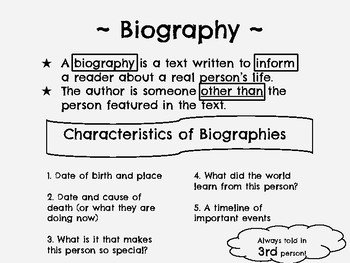
Description
Questions & answers, kaiti's kreations.
- We're hiring
- Help & FAQ
- Privacy policy
- Student privacy
- Terms of service
- Tell us what you think

IMAGES
VIDEO
COMMENTS
Fabulous anchor chart in SPANISH. Perfect for the immersion or ESL setting! ... Biography Anchor Chart in SPANISH. 2 Ratings. Previous Next. Sharlynn Boersma. 6 Followers. Follow. Grade Levels. 1 st - 5 th. Subjects. English Language Arts, Foreign Language, EFL - ESL - ELD. Resource Type. Handouts, Bulletin Board Ideas, Posters.
SPANISH resource - Reading anchor charts and interactive notebook pages for literary nonfiction (biography and autobiography.) Perfect for third, fourth, and fifth grade with printable and Google slides file for distance learning. This resource includes:- 4 black and white anchor charts in two sizes...
35 Spanish Anchor Charts for students to use as references and guides in their writing/reading! Abreviaturas Palabras escrltas de mmera corta y terminan con un punto. 000 00 0 0 00 000 0 0 d.,e» párrafos Oracién prncipal:o htroaxe el p&rafo • con Detaile UNO Detaile DOS
This biography unit of study contains anchor charts, lessons, graphic organizers and more within this collection. This is another free unit of study for teachers and homeschool families from The Curriculum Corner. We enjoy reading workshop because it is a great way for teachers to help students explore different elements of literature. At the ...
That way, you can replicate a similar anchor chart for your students. (Link: Biography Header Freebie) 2. Integrate reading into students independent and partner reading time. Utilize all the time you can with biographies. Plug them into daily centers and even book bins for students to read during downtime.
Anchor charts help students make connections with the content. When teaching in a bilingual or dual language classroom, using anchor charts in Spanish is essential because students need to SEE the words they are saying on paper. Anchor charts also help students learn tier-3 vocabulary words in English and Spanish.
Ask them to take notes while they are watching either the BrainPOP Biography movie or the BrainPOP Jr. Biography movie. Explain that they will contribute to a class anchor chart about biographies. After the movie has finished, ask each student for a fact to add to the anchor chart. Alternate the colors to make it exciting.
A little over a week ago, I had someone write and ask me if I had any Purposeful Talk anchor charts available. I didn't, so I tried to find her some online. But I couldn't find any with the Spanish version. So after doing a bit of research, I made these. The struggle I had, though, came when I was putting the Spanish version together because ...
Introduce the Genre. First, you will want to introduce the genre to students and explain why it is important. This can be a simple anchor chart where you list the characteristics of the genre. Use the free biography header pieces to create your own! *Activity Idea For Biography Header- Print two of each letter.
Oct 14, 2015 - This is a full "ENGLISH & SPANISH" product of posters (Anchor Charts). These posters are for the explanation of a Biography and Autobiography. These posters are great for bulletin boards so students are able to recall the difference between these two genres. I have also attached an organizer ...
Full anchor charts can be printed at approximately 24 x 32 inches using the "Poster" printing feature available on your printer's settings (instructions are included). Each full chart will print on nine 8.5 x 11 papers that can be taped/stapled together for display.
Lesson 2 Biography Story Map. A biography can be similar to a fiction book which tells a story. It includes a main character, setting, time and often problems. Have students choose a biography to read and complete this story map. You might choose to model this lesson by reading aloud a biography one day and completing the story map together.
Create an anchor chart to hang up for students to reference throughout your biography unit! 4 Ideas For Biography Mini Lessons. After introducing biographies, try one of these mini-lesson ideas for teaching biographies! ... You can model this with a biography about yourself on an anchor chart for students to use if they need help. This is also ...
An anchor chart is a tool used to support instruction (i.e., "anchor" the learning for students). As you teach a lesson, you create a chart, together with your students, that captures the most important content and relevant strategies. Anchor charts build a culture of literacy in the classroom by making thinking—both the teacher's and ...
3 steps to teach Prefixes and Suffixes in SPANISH! Step 1: Create an anchor chart with your students. It is important to teach the most common and grade level appropriate prefixes and suffixes. First, create an anchor chart or word family chart for each prefix and suffix. You can create anchor charts using these Post-it Super Sticky Easel pads.
Teach Students to Write Biography Reports. Social Studies, Writing. 9.5K shares. Our biography unit is one of my favorite units in our classroom! This is the first time students experience an independent report, use technology, and have to synthesize information from various sources. That can be a difficult task for second graders!
Language & Grammar. Science & Social Studies. Digital Learning. Making biographies fun (with two freebies). It's never too early to start teaching biographies to students. Many
Biography Anchor Chart is a useful tool that helps you with Biography Anchor Chart. Charts are a type of graphical representation that show the relationship between data, variables, or categories. They are widely used in various fields, such as education, business, science, and art, as they can help you visualize, analyze, and communicate ...
Dec 7, 2015 - Explore Jessica Bautista's board "Spanish Anchor Charts", followed by 180 people on Pinterest. See more ideas about spanish anchor charts, anchor charts, dual language classroom.
Just a quick AC I made that I then made into 4 smaller ones on a piece of paper for students to insert in their notebooks.